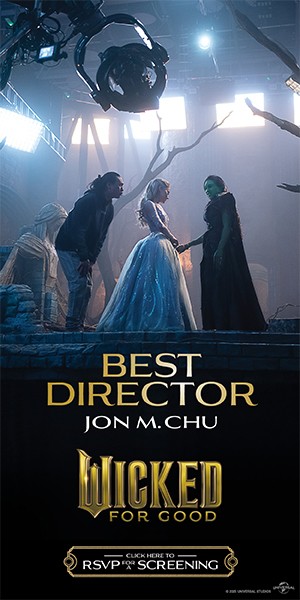Like the protagonist in his latest film, The Human Stain, director Robert Benton revealed that for years he's been struggling with a difficult, sensitive issue that has profoundly affected both his personal and professional life.
"I am dyslexic," Benton told director/writer Nora Ephron (Bewitched, Sleepless in Seattle, When Harry Met Sally...), who interviewed Benton following the October 19 DGA screening of Stain at Florence Gould Hall in Manhattan.
"I was dyslexic before anybody knew what dyslexia was," explained the 71-year-old Benton, who grew up in Waxahachie, Tex., in the 1930s and '40s. "I was called 'slow,'" Benton continued from a spare stage in front of a surprised audience. "It's an awful feeling to think of yourself as 'slow' — it's horrible."
In The Human Stain, Anthony Hopkins portrays Coleman Silk, a disgraced college classics professor in his declining years, forced to deal with the emotional fallout from a life of deception, 'passing' himself off as Jewish rather than revealing his true ancestry as a light-skinned African-American in a class-conscious society.
Benton's dyslexia is a rarely revealed facet of the man who wrote the Academy Award-winning screenplays for Places in the Heart (1984) and Kramer vs. Kramer (1979). Kramer also earned him the DGA and Academy Award for best director.
Movies, Benton said, saved him from isolation as a dyslexic child. "I learned strategies to cope with it, and I learned patience," he noted. "But my education was an education by movies.
"My father would come home at night and say not, 'Have you done your homework?' but instead, 'Let's go to the movies.' Movies could hold my attention. I could follow them. Over the years, they became a powerful source for me." Benton added that he frequently watched the same film over and over. "I saw A Place in the Sun 10 or 15 times."
It was dyslexia that led to Benton's earlier career as an art director at Esquire magazine. "I couldn't read — not for long periods of time," he explained. "What I could do was draw." After ultimately "getting fired" by Esquire, Benton said, "I decided to write a movie. I can't spell. But I had a terrific friend at Esquire, David Newman." Newman, an editor at the magazine, collaborated with Benton, and together they wrote the critically acclaimed screenplay for Bonnie and Clyde (1967).
Benton says he still storyboards like an art director, but as a film director he allows "a lot of improvisation." He cited a scene in The Human Stain in which actor Ed Harris, playing the estranged husband of a troubled cleaning woman (Faunia, played by Nicole Kidman), begins a threatening visit by removing his hat, then unexpectedly delivering a sweet, "Hi, babe."
"That wasn't in the script," Benton explained, "but I would have been crazy to take it out. I've learned to really pay attention to the actors."
In bringing The Human Stain to the screen from the original Philip Roth novel (screenplay by Nicholas Meyer), Benton said he viewed the issue of 'passing' as a metaphor. "I tried to make the connection, for many of us, with that need we have to walk away from our pasts. And we can't do it."
Benton said he felt like it was appropriate to "use an eraser, but not a pen" in streamlining the original, more complex work, which was written at the end of the Clinton Administration. "Looking at it now, it seems so innocent," Benton remarked. "It was a time when all we were worried about was the President's sex life. Philip Roth told me he wanted to have bumper stickers made saying, 'Bring Back Monica Lewinsky.'














